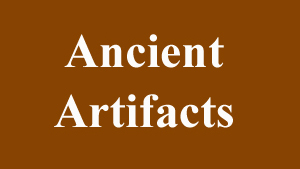What’s the difference between a discovery and a theory?
Imagine a pirate searching long and hard on the hot sandy beach of a deserted isle, the tropic sweat just oozing from his pores. He holds the yellowed map up to the eyes to shield them from the glaring sun when,  eureka! he sees the “X” on the map corresponds to two tilting palm trees forming the “X” in front of him. He fiercely digs into the dry sand beneath the intersecting barks. Moments later, he pulls a rusty treasure chest. He slams his shovel into the aged lock, shattering it into eight pieces. He breathes deeply with expectation and slowly (for dramatic effect) opens the ancient strongbox.
eureka! he sees the “X” on the map corresponds to two tilting palm trees forming the “X” in front of him. He fiercely digs into the dry sand beneath the intersecting barks. Moments later, he pulls a rusty treasure chest. He slams his shovel into the aged lock, shattering it into eight pieces. He breathes deeply with expectation and slowly (for dramatic effect) opens the ancient strongbox.
If it contains gold doubloons, he has a major discovery in his hands. If it contains a parchment filled with differential calculus, all he has is a theory.
So, while the Theories category honors the mathematicians, in the Discoveries category we pay homage to the lab rats.
The Original Nominations
The following candidates were nominated under the Discoveries category. Highlighted candidates have a separate description page already posted to this site. To view any highlighted nominees, place your cursor anywhere over the text of the nominee and click (pop-ups must be enabled on your browser):
The Circumference of the Earth (240BC: Eratosthenes)
Precession (Hipparchus of Nicaea)
Leap Day (45BC: Julius Caesar via Sosigenes)
Jupiter’s Moons (1609-1610: Galileo)
Saturn’s Rings (1610: Galileo; 1655: Christiann Huyges)
Faces of Venus (1610: Galileo)
Lunar Mountains (1609-1610: Galileo)
Uranus (1690: John Flamsteed; 1781: William Herschel)
Stellar Parallax (1727: James Bradley)
Lagrangian Points (1772: Joseph Louis Lagrange (1736-1813))
Asteroid Belt (1772: Johann Bode)
Cepheid Variable (1784: John Goodricke)
Ceres (1801: Giuseppe Piazzi)
Fraunhofer Lines (1814: Joseph Fraunhofer (1787-1826))
Neptune (1846: Johann Gottfried Galle)
Hydrogen (1862: Anders Jonas Ångström)
Helium (1868: Pierre Janssen & Norman Lockyer)
Martian “Canals” (1877: Giovanni Schiaparelli)
Cosmic Rays (1986: Henri Bequerel)
Period-Luminosity Relationship (1912: Henrietta Swan Leavitt)
Galaxies (1923-1926: Edwin Hubble)
Cosmic Rays Proved (1925: Robert Milliken)
Planet X (Pluto – 1930: Clyde Tombaugh)
Milky Way’s Spiral Arms (1951: William Wilson Morgan (1906-1994))
Van Allen Belts (1958: James Alfred Van Allen (1914-2006)
Background Radiation (1965: Penzias & Wilson)
Other Solar Systems (1988: Gamma Cephei)
Relativistic Pinball in CasA (2006: M. D. Stage et al)
Not all the nominees made the top 100. Still, we’ve tried to include a short write-up on each of them. Any nominee that finished in the top 100 greatest images and imaginations in astronomy and space exploration will have its rank listed in the upper left hand corner of the specific page devoted to that nominee.




Be the first to comment